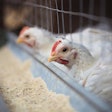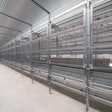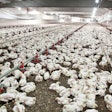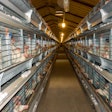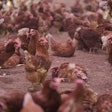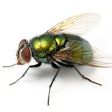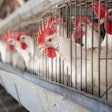
Layer movement can be tracked in cage-free environments through radio-frequency identification (RFID) technology, according to a research study conducted by U.S. Poultry & Egg Association (USPOULTRY).
The U.S. cage-free transition has driven the need for a better understanding of how an aviary environment impacts layer hen performance and welfare. Technology, such as an RFID system, could aid egg producers in tracking cage-free bird movement and help evaluate these production aspects.
To gain insight into the technology’s capabilities, Dr. Denise Heard, USPOULTRY Vice President of Research Programs, led a research project targeted at developing an RFID-based tracking system that could locate layer hens in a multi-tier cage-free system.
Dr. Denise Heard, USPOULTRY.jpg?auto=format%2Ccompress&fit=max&q=70&w=400)
On average, 87.3% of the birds in the house could be confirmed through the RFID technology. The top tier of the system showed the highest confirmation rate at 93.5%.
For each level in each room of the house, approximately 30 data points were confirmed using video recording to validate the RFID technology’s accuracy, resulting in 400 data points in total. Occurrences where birds were not confirmed were attributed to an issue with visualizing the bird on the video due to lighting, positioning or too many birds in a frame.
On an individual bird level, each hen showed consistent movement patterns, with some having implications for keel bone fractures. According to Heard, the incidence of keel fractures significantly corresponded to a hen’s activity level, where lower activity birds developed fewer fractures.
More details on the research
The primary objective of the project was to track layer hen movement in cage-free housing and to validate the reliability of a multi-point RFID system.
Video recording was conducted for three consecutive days on 12 focal birds in each aviary room to help validate the RFID technology. Birds were tagged with colored plastic leg bands to allow for identification on the videos.
The second objective of the study was to compare the space and time related patterns of layer hens during peak-lay, mid-lay and end-lay in a multi-tier cage-free system.
The birds were tracked from 29 to 40 weeks of age and their daily movement on the bottom, middle and top tiers of the aviary were evaluated. A significant amount variation between each tier was documented. While some hens showed frequent movement from the bottom tier to the top throughout the day, others were more inactive and almost always stayed on a single tier.







